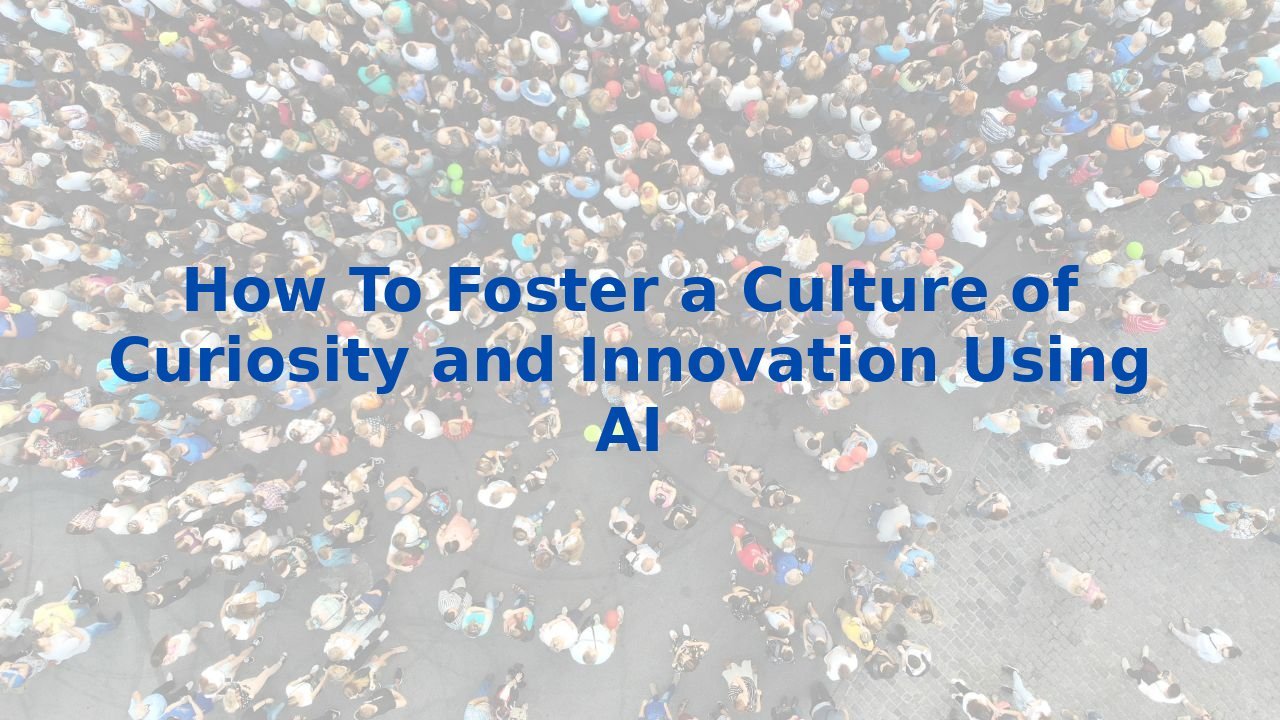How To Foster a Culture of Curiosity and Innovation Using AI
Fueling Innovation Through Curiosity and AI
In today’s fast-paced business landscape, cultivating a culture of innovation is not just an option; it's a necessity. Organizations striving for growth and sustainability must prioritize the development of curiosity among their employees. By tapping into the innate human desire to explore, question, and innovate, companies can unleash transformative ideas that can lead to outstanding results. However, before curiosity can flourish, it’s crucial to understand and dismantle the barriers that stifle it.
Understanding the Barriers to Curiosity
Curiosity is often hampered by long-standing organizational practices, fear of failure, and a lack of recognition for innovative ideas. Employees may feel discouraged to explore new concepts if previous attempts have been met with disdain or indifference. Recognizing these barriers is the first step toward cultivating a more curious and innovative workforce.
Moreover, the traditional reliance on status-quo thinking fosters a culture of complacency. Employees may become so engrossed in their daily routines that they miss opportunities to think outside the box. This is where the transformative power of AI comes into play.
Creating an Action Plan for Curiosity
Once the underlying barriers are identified, it’s essential to develop an action plan focused on measurable improvement. This may include workshops that encourage brainstorming, team activities that promote exploration, and the integration of AI tools that can stimulate innovative thinking.
By incorporating AI into various aspects of the work process, organizations can automate mundane tasks, freeing up employees' time and mental resources for creative thinking. AI can analyze vast amounts of data to pinpoint trends and insights that human employees might overlook, thus propelling curious minds into new territories of exploration and discovery.
Engagement, Innovation, and Productivity Through AI
Curiosity serves as a vital spark that ignites engagement among employees, fostering a more productive work environment. When organizations embrace a culture that prioritizes learning agility and exploration, they activate a cycle of continuous improvement. AI enhances this process by providing actionable insights that can lead to informed decision-making and innovative outcomes.
“Curiosity can be the catalyst for disruptive innovation.”
As organizations invest in AI technologies, they create paths for employees to explore new solutions. For example, AI can help streamline workflows, predict customer preferences, and even assist in product development. All of these enhancements contribute to a more robust culture of innovation that values curiosity and exploration.
Recognizing and Rewarding Curiosity
To solidify a culture of curiosity, businesses must implement recognition and reward systems for employees demonstrating curiosity-driven behaviors. Celebrating those who take initiative, suggest innovative ideas, or explore untested avenues fosters a sense of community and shared purpose, inspiring others to push boundaries.
Furthermore, organizations can enhance this dynamic by establishing training programs focused on cultivating curiosity. By investing in AI training for their employees, organizations can equip their teams with the necessary skills to leverage AI efficiently. This not only improves overall efficiency but also empowers employees to understand and utilize AI as a tool for creative exploration.
The Importance of Employee Training in the Age of AI
As AI continues to evolve rapidly, organizations must recognize that training their employees is essential for leveraging its full potential. Educational programs focused on AI understanding and application can make a significant difference in how employees engage with technology.
Offering comprehensive AI training equips employees with the skills they need to seek out innovative solutions and drive productivity. Not only does this enrich their knowledge base, but it also aligns them more closely with the organization’s vision of embracing curiosity and exploration. Employees trained in AI are not just users of technology; they become proactive problem-solvers and innovators in their own right.
Embracing a Culture of Curiosity and Innovation
In conclusion, building a culture that promotes curiosity is no small task. It requires a collective effort to identify obstacles, create actionable plans, recognize innovative behaviors, and invest in employee training. The integration of AI into these processes can vastly enhance the organization's ability to thrive amidst constant change.
When organizations embrace curiosity at every level, they create an environment where innovation can flourish. By removing barriers to curiosity and leveraging the capabilities of AI, businesses can embark on a transformative journey toward sustained growth and success.
Let’s ignite that flame of curiosity and propel our organizations toward an innovative future!
#innovation #curiosity



